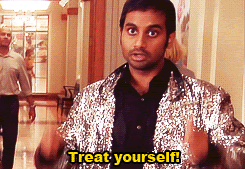Before you read this post… the best way to recession proof your business is to build a strong, resilient business in the first place. A business with products and services that solve real problems for your clients. A business with the right systems that ensure things get done and clients are happy. A business that attracts the right prospects and clients you love working with. What’s the best way to do all of that? The Copywriter Accelerator. Join the waitlist here.
What to expect…
In this post, you’ll find a detailed tear-down of the activities I did to shore up my business come hell or high water, following the recession-proofing framework that Rob Marsh shared at TCCIRL.
My goal is to help other copywriters and freelancers know what gear they need to insulate their business from current (and future) recessions.
At the end of each tip there is a “Go Try It Out” Section. Look for this symbol: 🛠.
My brain deals with stressful things by making systems. And if that’s you too, I made a hyper-detailed spreadsheet, complete with formulas and structured planning.
It puts this whole long-ass blog post into ACTION form.
Download the spreadsheet guide here.
(Don’t want the spreadsheet? Pen and paper also work.)
Now let’s get to it.
I really dislike the insulation part of a building project.
From winter-proofing our house to finishing up the cabin I’m building in the woods, insulation is the step I put off until it’s absolutely necessary.
I hate it because it’s gross. It gets everywhere. It’s totally itchy and I have to wrap myself up head-to-toe in a coverall that says my name is Allen, goggles, mask, hat, and gloves.
And then I crawl around for hours on end armed with a staple gun and utility knife.
It’s awful.

But the thing is, without insulation in your house, you’re just wasting energy.
Your home/cabin (and wallet) will pump heating and cooling and it will all…dissipate into the ether.
Insulation is what gives your home a baseline temperature, protecting you from the highs and the lows.
Recession-proofing your business is like insulating a house.
It seems like such an arduous insurmountable task that will probably take forever and requires so much gear… so we put it off and focus on client work instead.
Because that’s what pays the bills, yeah?
When bad economic weather hits you won’t be caught pumping wasted energy only to get bad leads and scrambling to make ends meet.
Luckily, recession-proofing is not as complicated as it sounds.
In the right-before-COVID times, I went to The Copywriter Club In Real Life event (TCC IRL 2020) and heard Rob Marsh’s presentation all about how to do recession-proof your business.
We were all nervously chuckling at how on-point it was while taking furious notes at the conference.
Our Spidey-senses knew that when we got home, the pandemic would find ways to make serious waves in our business.
And those waves would probably suck a lot.
As I was sitting there writing down Rob’s tips trying desperately to ignore my sweaty armpits, I realized I was nodding along because I had already done all of these things!
Call me a giant worry-wort, but recession-proofing my biz was my #1 objective waaaay back at the beginning of 2019.
I just didn’t have his nifty framework to follow.
2019 was Year 2 of me as a full-time copywriter. I did pretty well in my first year, but instead of doubling down to scale, I slowed up. I wanted to make sure that when (not if) a recession hit, my business could survive it. We were well overdue for a recession in 2019 and I did NOT want to go back to a ‘regular’ job.
I knew I couldn’t put off installing the insulation in my business—I had to gear up and get it done.
I wish I had Rob’s 6 Tips to follow in 2019 because there would have been way less fumbling around in the dark and more DOING THE THINGS. It was exhausting and confusing work, but when the recession hit in March, I was padded by all the insulating work I had done.
My business has doubled and I surpassed my 2019 gross revenue by June in 2020.
In short, Rob’s step-by-step advice really worked.
My own biz success is one solid data point to prove it.
And his advice can still work even in the middle of a recession (which we’re in now).
And you get the added benefit of following these tips, unlike me who just poked at stuff hoping it’d work.
If you’re a systems-thinker like me, grab the spreadsheet from the get-go to accompany you through this post. It’s the best way to see how to tangibly implement the advice.
6 tips for recession-proofing your business (and what they look like in action)
- Tip #1: Don’t run out of money
- Tip #2: Frame your business right
- Tip #3: Work on your systems
- Tip #4: Build your network
- Tip #5: Make more offers
- Tip #6: Make smart investments
- Bonus Tip: Stay positive

Tip #1: Don’t run out of money
Like…isn’t this the goal?
Of course, but there are proven strategies to make sure you always have money in the bank.
Pay thyself a salary
Don’t just pay yourself whatever you make—that leads to potentially devastating cash flow problems. Salaries are your built-in budgeting. They can help you more easily determine your target monthly revenue and make it easier to track your growth.
Sit down and run the actual numbers.
- What do you need to pay yourself every month after taxes in order to make ends meet?
- What’s your stretch goal?
- What’s your ideal state?
Start at the bottom and slowly work your way up.
In 2019 I started paying myself $1,800/mo and gave myself raises when my business could sustain it. A year later my salary has more than doubled.
How will you know if your business can sustain a salary raise?
Honestly…I followed my gut.
The better way would have been to hire a bookkeeper.
Choose what works best for you.
Hint: set up an automatic deposit from your business account to your personal so it feels like you’re getting paid a salary. Don’t do it manually. Manually it’s too easy to cheat ;)
And if you don’t yet have a business bank account, I highly suggest opening one.

Get 3-6 Months of Savings
Rob (and many other very smart people) say to have at least 3-6 months of expenses in savings. More is better.
This is why you have to pay yourself a salary first—so you can properly account for that in your savings.
Savings also act as a buffer from feast/famine cycles.
On feast-level months the pot expands, so when famine hits you have a store cache of money there to keep paying yourself.
In short, a savings cushion is your peace of mind.
I always have 5-6 months in my savings because I worry ALL OF THE TIME.
Buttttttt it’s easy to see that pot of money and be like…what if I just gave myself a nice little bonus????
Resist!
That savings is your lifeboat when sh*t hits the fan.
And it will hit the fan.
It saved me at the beginning of the recession and multiple times throughout my copywriting career.
I never had to go into total fear mode, which made me more confident out in the world pitching to potential clients.
And if you follow The Copywriter Club, you’ll know that confidence is the #1 factor in helping you close a new client.
Get an anchor client
Stability is really nice during a recession and an anchor client is key.
What is an anchor client?
A client who nets you predictable income—someone who comes to you for consistent work, a retainer relationship, or they booked you for a really big project with a multi-month timeline.
This client probably won’t be your ideal client.
Heck, I worked with a client for a year where all I did was churn out copy like a machine. It sucked… to say the least.
But I had a stable paycheck that covered half of my salary every month.
That meant I just had to make up 50% in new sales a month.
Be okay with working clients that aren’t completely dreamy during a recession—you may need them to get through. But take heart knowing eventually you’ll be able to let them go.
6 months into the 2020 recession I was finally able to leave my anchor client because I needed more space to move to better waters.
🛠The “Go Try It Out” Section—Tip #1: Don’t Run Out Of Money
Get that spreadsheet linked above or get out your pen and paper.
Salary
• What is the minimum salary needed to make ends meet?
• What is your stretch goal?
• What is your stretch goal?
• What is your ideal state?
• Add about 40% to these numbers to account for taxes and general business expenses. That is your monthly gross revenue goal.
3-6 Months of Savings
• If you don’t have a business account, make an action item to go do that.
• How much savings do you have right now? (in your business, not your personal account)
• How much you need to save for a baseline of 3 months in savings?
• How much do you have to go?
Find An Anchor Client
• Do you have an anchor client already? Yes? Awesome!
• Need one? Make a list of places you can go to find one (networking events, local agencies, etc).
• Make another list of potential anchor clients and create a plan to get on their radar. Email? Stalk them on LinkedIn? The possibilities are endless.
Tip #2: Frame your business right
Perception is everything. From your initial interaction to the last moment before a client says YES, how you show up is critical.
If you talk about your business with confidence and as the expert you 100% are, sales come easier and you can charge what you’re worth (which is more than you’re charging now).
Raise your rates
At the beginning of 2019, I was this little newbie copywriter with a tiny portfolio and few contacts.
When I would go to pitch a potential client, I would start FULL OF CONFIDENCE…and then slowly but surely keep cutting the price down until it felt like what I deserved. (Which wasn’t a lot. Or enough.)
The problem with lower prices is that it makes your awesome work look totally not awesome to the client. Paying $500 for a 5-page website is a totally different experience than $5,000 for the same work from the same person.
2019 was MY year of getting over a ton of money mindset hurdles.
I joined an online business accelerator, got an accountability buddy, and talked with a lot of other copywriters.
My first real “aha” moment was with a copywriter who I really respect.
She told me flat out “Anna, I wouldn’t even refer my clients to you. Not because you’re not good enough, but because your prices are so low they would just say no immediately.”
Whoa.
Gut punch.
If that’s not incentive enough to figure out my prices, I don’t know what would’ve been.
I doubled down to figure out what was tripping me up when it came to raising my rates.
Then I raised ‘em.
It was fricking terrifying.
But people said yes faster.
Clients were more engaged, more respectful of my expertise, and trusted in my work more (and revisions weren’t a total nightmare anymore).
Raise your rates when it’s right for you, when you can handle the higher level of expectations, and when you have started to outgrow your work.
It might seem counterintuitive to raise your rates during a recession but remember: perception is everything.
Remember your client is just as stressed as you are.
See that price will give them more confidence in you, in their decision to hire you, and for the long-term sustainability of their own business.
We live in a very money-first society (unfortunately). A solid price engenders confidence—and we all need that during a recession.
Build your authority
What the heck even is authority?
How do you measure it?
How do you know you have it?
You can’t know. But you still need it.
Authority, simply put, is when someone thinks of you first for what you offer.
It’s not just the number of certifications, courses, or corporate client logos you collect (though that helps wildly).
It’s not how quickly you can rattle off copywriting methods and best practices.
It’s about staying top of mind.
And that means generating content and (ugggggh) marketing ourselves.
I avoided intentionally marketing myself for a really long time…and struggled with inbound leads constantly because of it.

Start with a marketing tactic that you feel the most comfortable with (podcasts, blogging, email newsletters, social media), get really good at it, and then grow from there.
You can’t force yourself to do something you don’t like.
If you try to make yourself do podcasts but hate public speaking, you’ll procrastinate until the cows come home.
I knew I needed to build up my authority because I was a noob with little going for them but naiveté and stamina.
I was pretty good at thinking on my feet, so in 2019 I volunteered to moderate panels at local events, tried my hand at running workshops, did (very) small speaking engagements, and became co-leader of a local meetup.
I also started sending out a weekly email newsletter where I write whatever the hell is on my mind and people seem to like it.
Now 100% of my business is referrals.
Find the type of content you’re really good at and dedicate yourself to it.
That’s where authority is born.
🛠The “Go Try It Out” Section—Tip #2: Frame Your Business Right
Use the spreadsheet linked above or get out your pen and paper.
Raise your rates
• What is your signature service? (website, landing page, email onboarding, blog, etc)
• What did you last charge for it? Be honest.
• What is your ideal pie-in-the-sky rate?
• Next time you book a client for this service, raise your rate by 10% and keep moving them up!
Build your authority
• What type of outreach/marketing are you really f-ing good at and love doing? (podcasting, speaking, blog writing, email newsletters, videos….)
• What’s your second best thing?
• Come up with an AUTHORITY plan and make it happen.
Tip #3: Work on your systems
A lot of times freelancers (me included) tend to panic when we don’t have an active project.
We think “OMG NO ONE WILL EVER WANT TO WORK WITH ME AGAIN THIS IS THE END.”
And then we cycle into desperation mode and put all of our energy into client generation.
Yes, we should put some energy into generating new leads, but having a lull in client work is actually a gift.
It’s the time where you can shore up your processes, audit yourself, and make sure every single touchpoint a client has with you is awesome (which makes them way more likely to re-hire you and/or refer you).
Systems also make your head less likely to explode.

Here are a few systems to focus on:
Sales and lead generation—Every week I set aside one hour for all of my prospecting. I hate prospecting, it feels weird, so I just get it done.
I reach out to warm contacts, follow up with emails, and do some “stuff” on LinkedIn. That hour alone is the biggest reason my business doubled in 2020.
Contracts and proposals—Need a template? Join The Copywriter Club Underground and there are a ton in there (I’m not getting paid to say this, it’s just 100% true).
On-boarding—Once a client says YES, what happens next? An official kick-off email sent to all key stakeholders? A questionnaire? A project link in Asana? There are a bunch of ideas to help with this inside The Copywriter Underground too (see link above).
Project updates—Every Monday send a project update to your active clients, telling them what’s up, what’s on schedule, and what’s needed.
Whenever I send an email saying “We’re on track for on-time delivery!” I always get a response of “This is amazing news!” It keeps your clients engaged and shows you’re working hard (aka worth the money they invested in you).
Off-boarding—Besides just sending the final invoice, do you send a questionnaire for feedback? Do you check in a month later to see how the launch went? Do you ask for a testimonial or results? Finish the project on a high note!
🛠The “Go Try It Out” Section—Tip #3: Work On Your Systems
Use the spreadsheet linked above and for each system, write down a step-by-step plan, from what triggers that system to what ends it.
• Sales and lead generation
• Contracts and proposals
• Onboarding process
• Regular project updates
• Offboarding
Tip #4: Build your network
Building your network isn’t just connecting to total randos on LinkedIn.
Do you have a ton of emails and connections but don’t really know who they are?
Or do you have a network of people you know, respect, and engage with?
A network shouldn’t just be a list of people—it should be your greater community.
Having a strong community is like having your business parked on beach-front property.

When your community is small you’re stuck in a kiddy pool in the suburbs, desperately trying to enjoy the water.
When your community is an ocean, you get to explore.
Your network becomes adventurous and full of possibilities. Who knows where just one connection will take you?!?
In 2019 I went to countless events in the city, became a lot more active on LinkedIn even though I didn’t wanna, and followed up with people via email (see the ‘prospecting hour’ note above in Tip #3). I did a brave thing and bought a ticket to TCC IRL 2019, even when it stretched my budget at the time. I made amazing friends with whom I still swap projects with .
When I lost a major contract late summer of 2020 all I had to do was reach out to a few people on LinkedIn and got 3 new project leads.
Make yourself a list of interesting events to attend (especially TCCIRL).
Even though all events are currently virtual, they are still a fantastic place to meet people.
Be active in the chat window. Ask questions.
Follow up with the presenter and thank them for the knowledge they dropped.
If you’re uncomfortable at events, get on LinkedIn.
When you request to connect with someone act as if you were meeting them in real life. Include a message with your request to make it more human.
Don’t just immediately sell your services. Ask them how they’re doing during the pandemic, what strange new hobbies they’ve discovered, or the most recent bad movie they watched.
Get creative!
Other options?
Facebook Groups are a good bet. Be sure to join The Copywriter Club’s free FB group, or join The Copywriter Club Underground for a more private group.
Respond to people’s comments, celebrate other people’s wins, and don’t be afraid to ask your own questions.
And when you do personally connect with someone, follow up.
Make it a relationship, not a transaction.
Community is EVERYTHING.
Get your business ocean-side access.
🛠The “Go Try It Out” Section—Tip #4: Build Your Network
Download the spreadsheet at the link above or get out your pen and paper.
It’s time to make some more lists (yipeeeeee!)
Step one:
• Who is in your inner circle of entrepreneur buddies? Your go-to people when you’re freaking out, have questions, and ask to get drinks with?
• Who is in your outer circle of entrepreneur buddies? Coaches, great contacts that you bump into at events, people you stalk on social media…
• Who would you love to be in your inner circle?
Step two:
• Where do you currently hang out online?
• Where do your ideal clients hang out?
• Where do you need to be hanging out?
Step three:
• What business organizations are you already a member of? (Include Chamber of Commerce, Copywriter Club Underground, masterminds, and more.)
• What organizations do you want to join?
• What’s holding you back from joining? Price? Time? Be honest.
Tip #5: Make more offers
Offers are SCARY.
What if the price isn’t right!?
What if they hate it?
What if they REJECT YOU?
Rejection happens. It’s the sucky part about being a freelance copywriter.
But if you never make offers, you’ll never get clients!

In 2019 I created and tested 3 productized services to help with my top-of-funnel acquisition and give me something that felt easier to market.
I ended up not liking and/or failing at 2 of them.
One, my live website review (you can see it on my site), became a massive hit and one of my best sales tools.
It’s perfect for clients who can’t quite afford me, clients who want to test the waters first, or people who just need something fast and quick.
You just gotta try shit to see what works for you.
And remember that prospecting hour in Tip #3? Persistence is everything.
Weekly prospecting forced me to learn how to make offers that I didn’t hem and haw over.
If I only had one hour to get all the prospecting done, I would whip up a quick line and send it off.
One client chatted back and forth with me for 6 straight months before they were ready.
That wouldn’t have happened if I wasn’t in their inbox so frequently.
Some clients take a lot of time to convert—don’t give up!
Consistency is key. Find a way that keeps you consistent and confident.
🛠The “Go Try It Out” Section—Tip #5: Make More Offers
Get that spreadsheet or pull out your pen and paper.
Understand your mindset.
• What is the hardest part about prospecting and making offers for you?
• What is holding you back?
Get real with what you’re doing right now.
• Do you have a template for cold pitches?
• Do you have a template for standard offers?
• How many offers did you make last month?
• How many do you want to make this month?
Build a system (yay more systems!)
• What is your current process for generating leads (aka prospecting)?
• What is your current process for making an offer?
Tip #6: Make smart investments
Smart investments don’t have to mean join an expensive mastermind or buy (yet another) online course. But they might.
Figure out where your gaps are and invest in that.
Gaps can be in knowledge, network, accountability, or your personal life.
As I mentioned before, in 2019 I went to TCC IRL in NYC and made so many amazing copywriter friends.
I did another round of a business accelerator to keep me focused up.
I bought A LOT of books.
I joined The TCC Underground (love it so much, highly recommend, you should 100% join).
I blocked off every single vacation I wanted to take in 2020 so I would plan all of my projects around them (aka planned when I wasn’t going to work).

Making smart investments to help fill your gaps means when the winter vortex of recession hits, your business is insulated.
But how do you know if an investment is smart or will get you the ROI you need?
If you invest in something and aren’t sure what you want from it, you won’t feel like it was worth your time or money.
A smart investment is one where you’re intentional in your decision no matter how much it costs.
Write down clearly what you want from the investment.
-
- If it’s a sales course, you could have a goal of winning 5 more sales the next month.
- For a mastermind, maybe you want to develop at least one close relationship with someone else in that mastermind.
- For vacation, set the intention of shutting off your phone for at least 4 hours every day (or something like that)
I always write down what I want from an investment to hold me accountable, make me actually do the work, and get my desired return.
🛠The “Go Try It Out” Section—Tip #6: Make Smart Investments
Remember that spreadsheet? Get it or get out your pen and paper again.
Figure out where you need to invest.
• What is your biggest gap right now? Knowledge, Network, Accountability, Personal Life, or Other?
• Your second?
• Where might you fill that gap and how much will it cost? Worry less about the investment and more about the value you’ll get out of it.
• Decide whether you invest NOW or save up for it (the Copywriter Think Tank is on my SAVE FOR IT list)
Bonus Tip: Stay positive
Recessions suck.
Everyone is stressed.
Everyone is on edge and worried about taking care of their loved ones.
It can be hard to stay positive.
It is 100% okay to feel horrible.
But you also have to make sure you’re giving yourself a chance to feel joy.
Not only is working from a place of fear 150% more exhausting, clients can sense your desperation. Almost every single time a client says “no” to a project proposal of mine, it’s because I entered the sales call white-knuckled and desperate.
Don’t forget you are not alone.
Even though you’re building your own business and making your own way, your community is there for a reason.
They’re there to help you relax, process, and laugh.
Ask help from your friends when you need emotional support.
Go on hikes with your family.
Play Words with Friends.
Make a ‘movie night’ plan with Netflix Party and mail a packet of popcorn to everyone.
Find the things that bring you joy and invite others to the party.
Hang out with the rest of us in The Copywriter Club.
Your recession-proofing accountability guide

I hope this gave you some clear action items to help you insulate your business and keep going strong, no matter what the world throws at you.
If you haven’t already, be sure to grab the nerdy spreadsheet I built to help you plan, track, and hold yourself accountable.
 Anna Hetzel (they/them) helps growing companies build thriving customer bases centered around their brand. For over 5 years they’ve helped countless businesses—from tech startups to national brands to nonprofits—understand their target markets, uplevel their websites, and retain their customers. When they’re not designing with words, they can be found building (and insulating… grrr!) a tiny cabin in the woods, reading a book, or enjoying one of the (way too many) other hobbies they enjoy.
Anna Hetzel (they/them) helps growing companies build thriving customer bases centered around their brand. For over 5 years they’ve helped countless businesses—from tech startups to national brands to nonprofits—understand their target markets, uplevel their websites, and retain their customers. When they’re not designing with words, they can be found building (and insulating… grrr!) a tiny cabin in the woods, reading a book, or enjoying one of the (way too many) other hobbies they enjoy.

